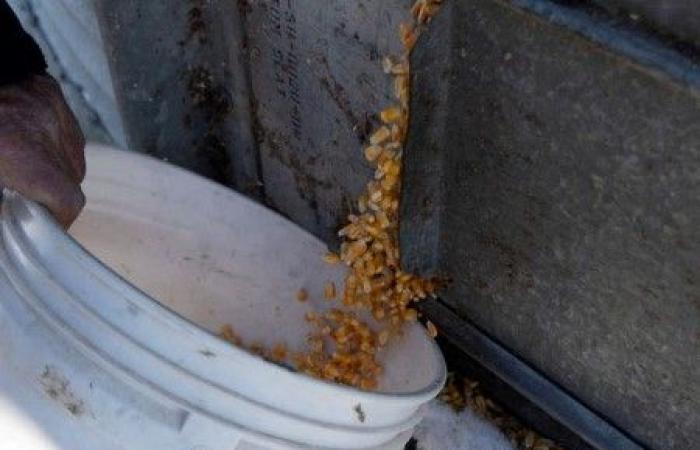By PJ Huffstutter and Karl Plume
CHICAGO, June 17 (Reuters) –South Dakota farmer Eric Kroupa received a flurry of calls from grain dealers and ethanol plants asking to buy the corn locked away in his bins when prices neared 4-1/2-month peaks last month.
He sold some, but is waiting for buyers to up their bids to sell more. Prices have since eased and are hovering just above three-year lows posted in February.
“There’s a lot of corn out there but it’s sitting in the farmers’ bins and not the end-users’ hands,” Kroupa said.
despues de stockpiling crops for much of this season due to low prices, many farmers in the world’s largest corn-producing nationcontinue to shun buyers despite few signs that prices will improve. Grain supplies are ample and early ratings of summer crops are the best in years.
A larger-than-normal volume of grain remains unsold, according to Reuters interviews with 15 grain farmers across the US Midwest. By September 2025, US corn inventories are expected to reach a six-year high, according to the US Agriculture Department.
Uncertainty around if and when farmers will liquidate their stockscould make for choppy grain prices, both in cash and futures markets.
Farmers risk waiting too long to sell as a flood of newly harvested grain is likely to drag down prices this October and November.Buyers, aware the harvest is coming, you still need enough supplies to keep processing plants running and exports flowing this summer.
An economic stare-down between growers and grain buyers is taking shape, said Angie Setzer, a partner at Michigan-based Consus Ag.
“I’ve never seen anything like it in my life. No one’s engaged, not the farmer and not the consumer,” Setzer said.
Many growers sold just enough this spring to cover short-term cash-flow needs, Setzer said.Some are counting on adverse weather this summer to trigger price rallies, although nothing is guaranteed.
Three farmers told Reuters they convinced seed and chemical suppliers to reduce late fees, allowing them to hang on to their crop. Others, including Kroupa, use the futures market to hedge the risk of further price declines.
Meanwhile, commercial buyers are banking on lower prices this summer due to the grain glut, analysts said.
USDA will offer an update of how much corn sits on farms in a quarterly stocks report on June 28.
US corn supplies stored at the farm level stood at just over 5 billion bushels as of March 1, the second-highest on-farm stocks on record for that date, according to USDA. On-farm stocks represented 60.85% of the entire US corn supply, the largest share since 2005.
Some buyers are trying to pry grain away from farmers by offering premiums for immediate supplies to fill near-term needs, but are lowering prices once those orders are filled.
Archer-Daniels-Midland ADM.N on Friday offered farmers a 7-cent-per-bushel premium for corn delivered to its Decatur, Illinois, processing plant by Sunday versus later in the month. At ADM’s Cedar Rapids, Iowa, plant, that premium is 15 cents.
Such offers of a few extra pennies per bushel can amount to thousands of dollars per grain transaction.
Indiana crop and cattle producer Samuel Ebenkamp emptied one corn bin with sales during an early-May rally, but opted to hold the rest. He’ll sell more if prices rally again, but he’s holding tight to ensure his cattle feed needs are covered until the fall harvest.
His neighbors are making similar financial calculations, he said.
“There is an insane amount of on-farm storage here,” Ebenkamp he said. “It doesn’t appear anyone’s in a rush to sell.”
Farmers are still holding a larger-than-normal amount of their last harvest while demand for corn has been fairly solidanalysts said.
“Ethanol margins are still relatively good. Feed margins are good. So there is demand out there. And as you look at the export sector, it’s going to be improving,” said Dan Basse, president of Chicago-based consultancy AgResource Co.
How they fill that demand this summer is unclear, Basse said. “They are short-bought and the farmer is still long. Who is going to blink first?”
Editing by Caroline Stauffer and Rod Nickel






